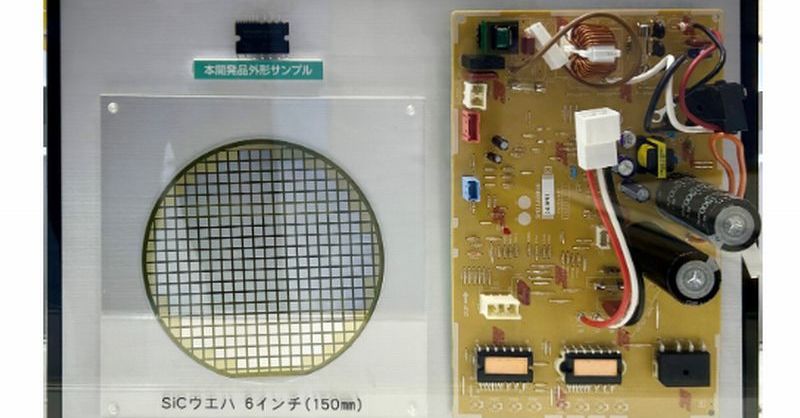New IPM with SiC: Lower Aircon Energy Use – A Revolutionary Leap in Cooling Efficiency
The quest for energy-efficient cooling solutions has led to a groundbreaking innovation: a new Intelligent Power Module (IPM) incorporating Silicon Carbide (SiC) technology. This advancement promises to significantly reduce energy consumption in air conditioning systems, offering both environmental and economic benefits. This news article delves into the specifics of this technology and its potential impact on the future of cooling.
What is an Intelligent Power Module (IPM)?
An IPM is an integrated circuit that combines several power electronic components, such as Insulated Gate Bipolar Transistors (IGBTs), diodes, and gate drivers, onto a single substrate. Traditionally, these components were separate, leading to larger, less efficient systems. IPMs streamline the process, improving performance and reliability.
The Role of Silicon Carbide (SiC)
The game-changer in this new IPM is the incorporation of SiC. SiC is a wide-bandgap semiconductor that offers superior performance compared to traditional silicon-based IGBTs. Key advantages include:
- Higher Switching Frequency: SiC allows for much faster switching speeds, leading to reduced switching losses and improved efficiency.
- Lower Conduction Losses: SiC exhibits lower on-resistance, resulting in lower energy consumption during operation.
- Higher Operating Temperature: SiC can withstand higher temperatures, enhancing the reliability and lifespan of the air conditioning system.
- Smaller Size and Weight: SiC devices are typically smaller and lighter than their silicon counterparts, leading to more compact air conditioner designs.
How SiC-based IPMs Lower Aircon Energy Use
By combining these advantages, the new SiC-based IPM significantly reduces energy losses within the air conditioner's power electronics. This translates to:
- Reduced Energy Bills: Consumers can expect noticeable savings on their electricity bills due to lower energy consumption.
- Lower Carbon Footprint: Less energy consumption directly contributes to a smaller carbon footprint, aligning with global sustainability goals.
- Improved System Efficiency: The overall efficiency of the air conditioning system is boosted, leading to better cooling performance with less energy input.
Market Impact and Future Implications
This technological advancement has far-reaching implications for the air conditioning industry and the wider world. We can anticipate:
- Increased Adoption of Inverter Technology: The improved efficiency of SiC-based IPMs will likely accelerate the adoption of inverter-based air conditioners, known for their energy-saving capabilities.
- Development of More Efficient Cooling Systems: This technology paves the way for the development of even more efficient and eco-friendly air conditioning systems in the future.
- Potential for Wider Applications: The benefits of SiC-based IPMs extend beyond air conditioning, with potential applications in various power electronics systems, including electric vehicles and renewable energy technologies.
Conclusion: A Cooler, Greener Future
The introduction of the new IPM with SiC marks a significant step towards a more energy-efficient and sustainable future. Its impact on reducing air conditioner energy consumption is substantial, offering both economic and environmental benefits. As this technology becomes more widely adopted, we can expect to see even more innovative and efficient cooling solutions emerge, contributing to a cooler and greener world.
Further Reading:
-
- Replace with an actual link
-
- Replace with an actual link
Keywords: SiC, Silicon Carbide, IPM, Intelligent Power Module, Air Conditioner, Energy Efficiency, Energy Savings, Cooling, HVAC, Sustainability, Inverter Technology, Green Technology, Power Electronics.
